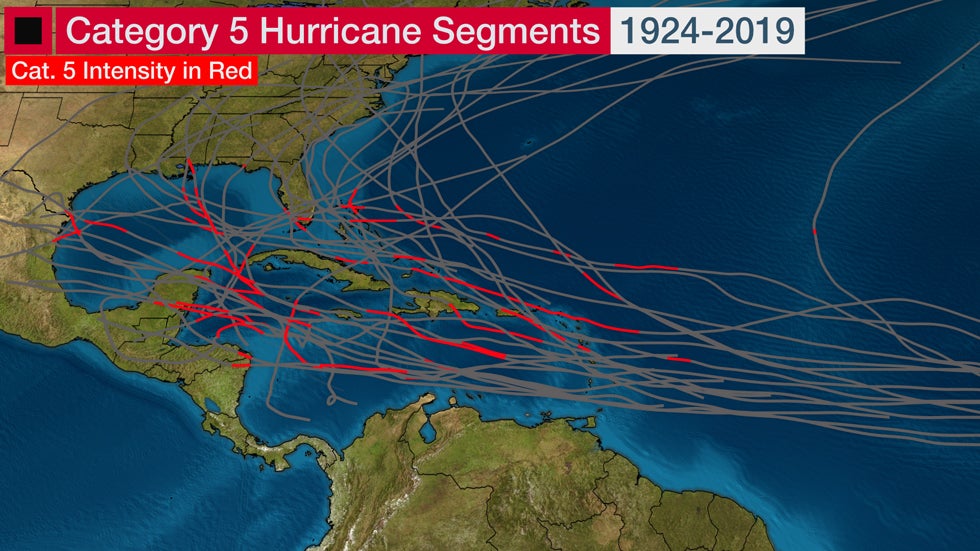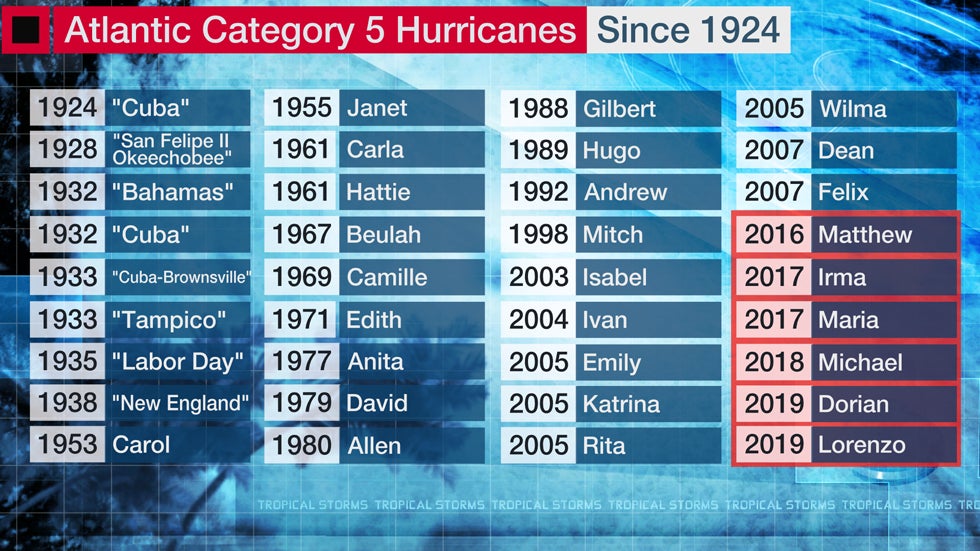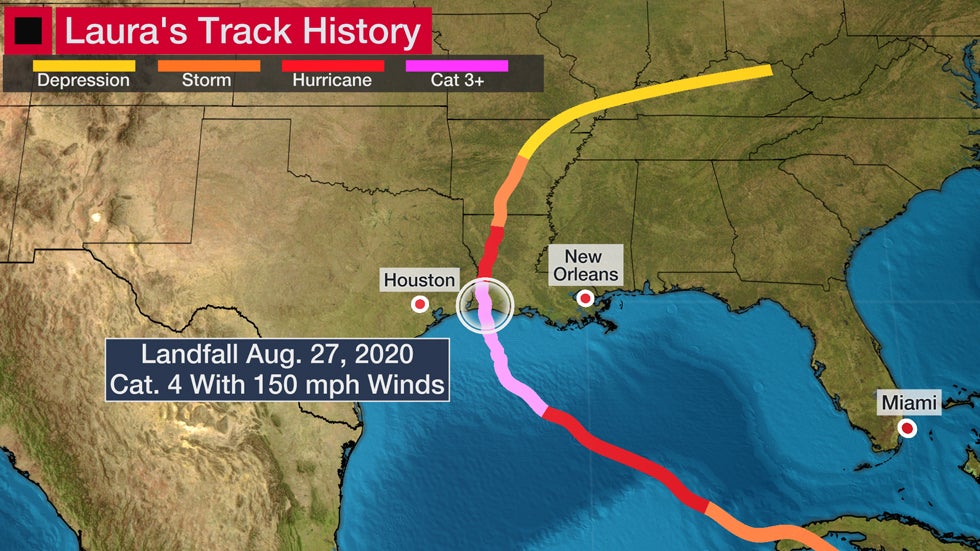Chris Dolce
The 2020 hurricane season has been exceptionally busy, but it could also end a record-long four-year stretch where at least one Category 5 hurricane has roamed the Atlantic basin.
Category 5 hurricanes are rare and have maximum sustained winds of 157 mph or greater on the Saffir-Simpson Hurricane Wind Scale. There have been just 36 Category 5 hurricanes in the Atlantic Basin since 1924, according to the National Oceanic and Atmospheric Administration (NOAA).

The past four years have been unusual with six hurricanes attaining Category 5 strength at some point along their path through the Atlantic, beginning with Matthew in 2016 and ending with Lorenzo in 2019. That's the most consecutive years the Atlantic has had at least one Category 5 since at least 1924.
Prior to 2016, the Atlantic went eight consecutive hurricane seasons without a Category 5.

Laura is this year's strongest Atlantic hurricane so far. It had maximum sustained winds of 150 mph (Category 4) when it made landfall in southwest Louisiana. However, the National Hurricane Center (NHC) will reevaluate Laura in a post-season analysis and that could alter what its maximum sustained winds were near landfall. That means there is some chance Laura could still be deemed a Category 5 depending on what that analysis finds.
Hurricane Michael in 2018 is a recent example of a post-season upgrade. It was deemed a Category 5 in the spring following its October landfall.

Category 5 hurricanes are much rarer this late in the season when compared to August and September. But late October and even November have had hurricanes reach this top-end strength.
A Caribbean hurricane in 1932 hit Category 5 strength on Nov. 5 and held onto that intensity into Nov. 8. That's the latest in the year on record the Atlantic basin has had a Category 5.
As long as no late-season storms reach Category 5 strength, and there are no upgrades of storms like Laura after the season ends, then the record four-year stretch of Atlantic hurricanes hitting this top-end strength would come to an end.
The Weather Company’s primary journalistic mission is to report on breaking weather news, the environment and the importance of science to our lives. This story does not necessarily represent the position of our parent company, IBM.
The Weather Company’s primary journalistic mission is to report on breaking weather news, the environment and the importance of science to our lives. This story does not necessarily represent the position of our parent company, IBM.

No comments:
Post a Comment